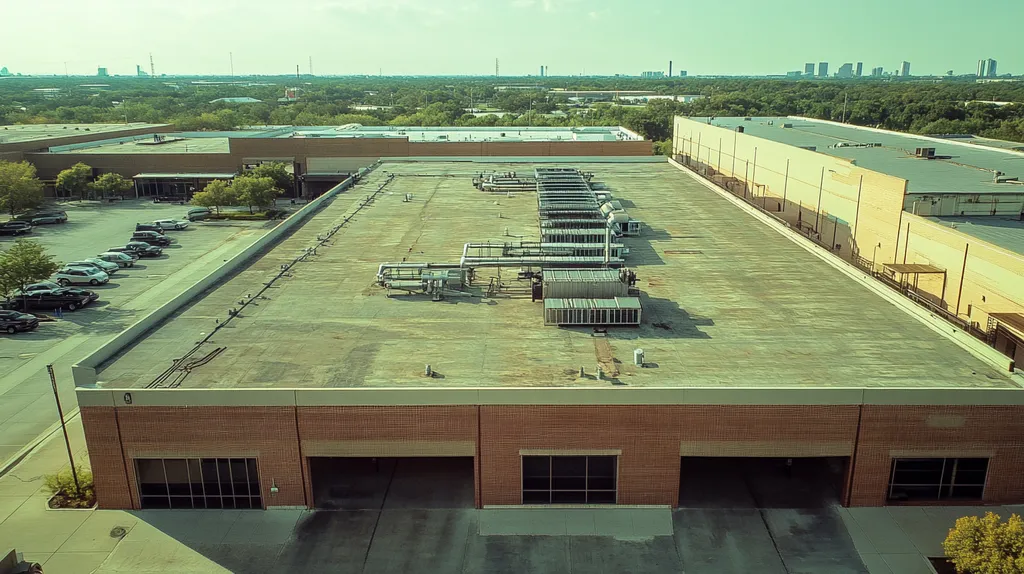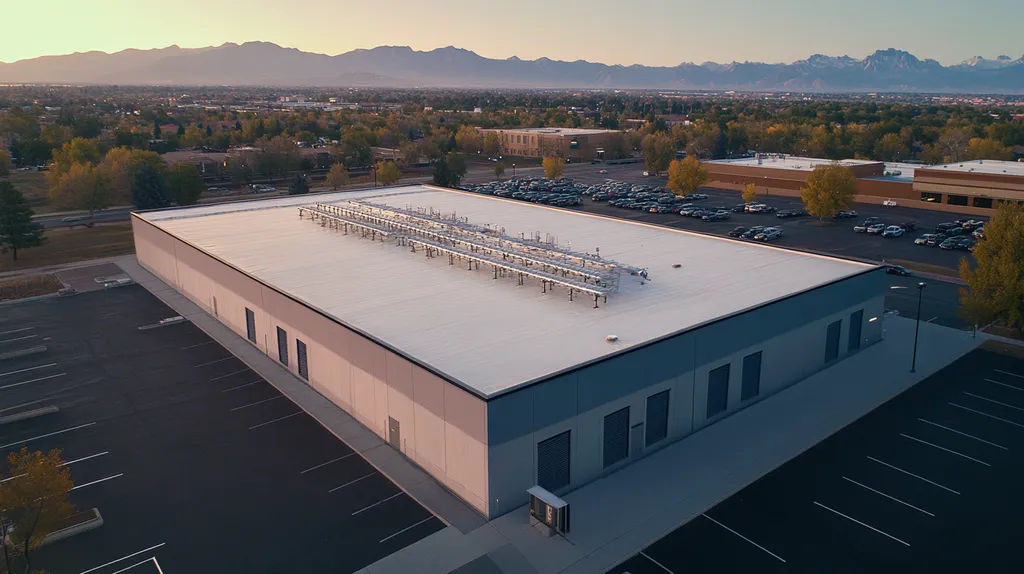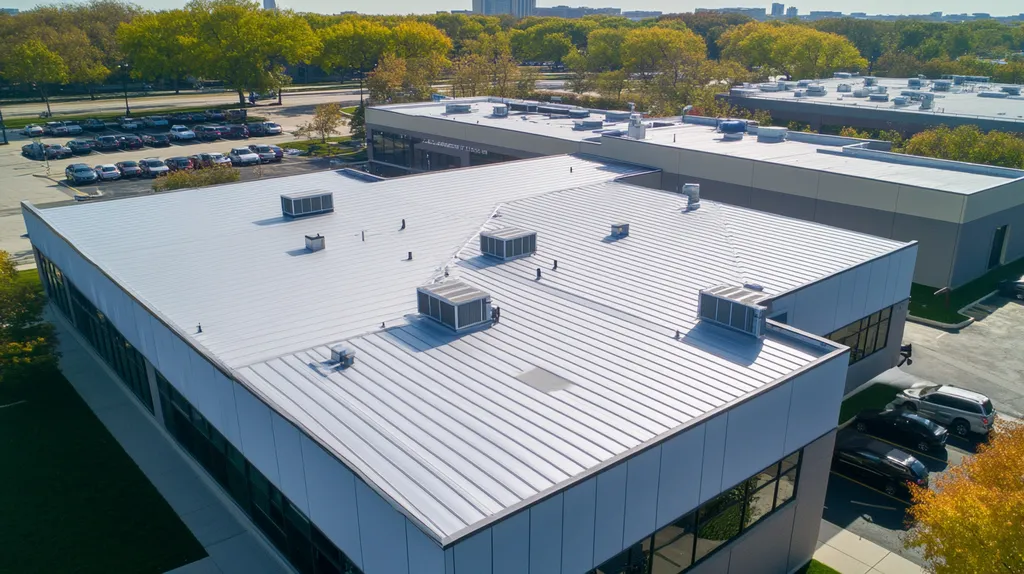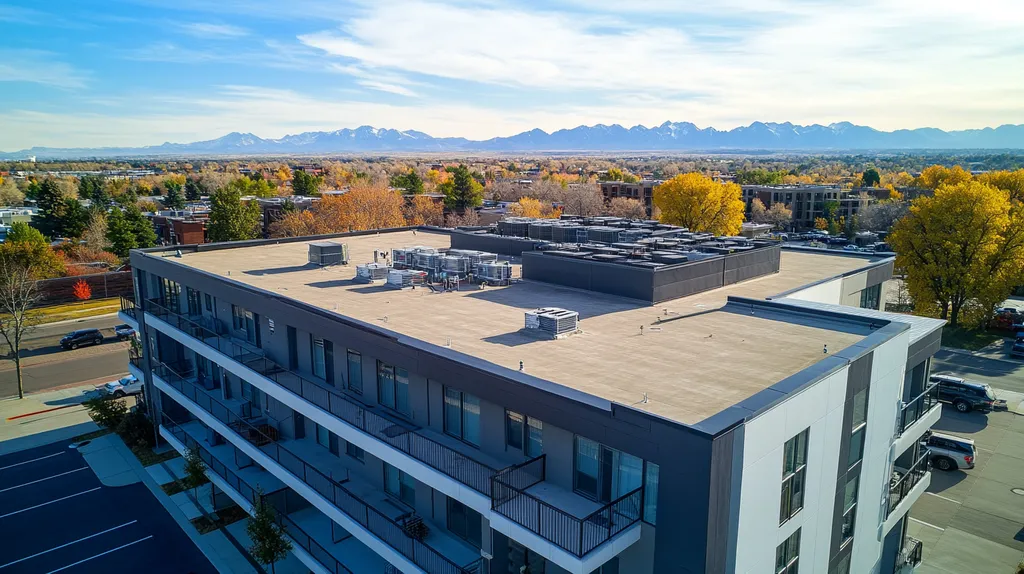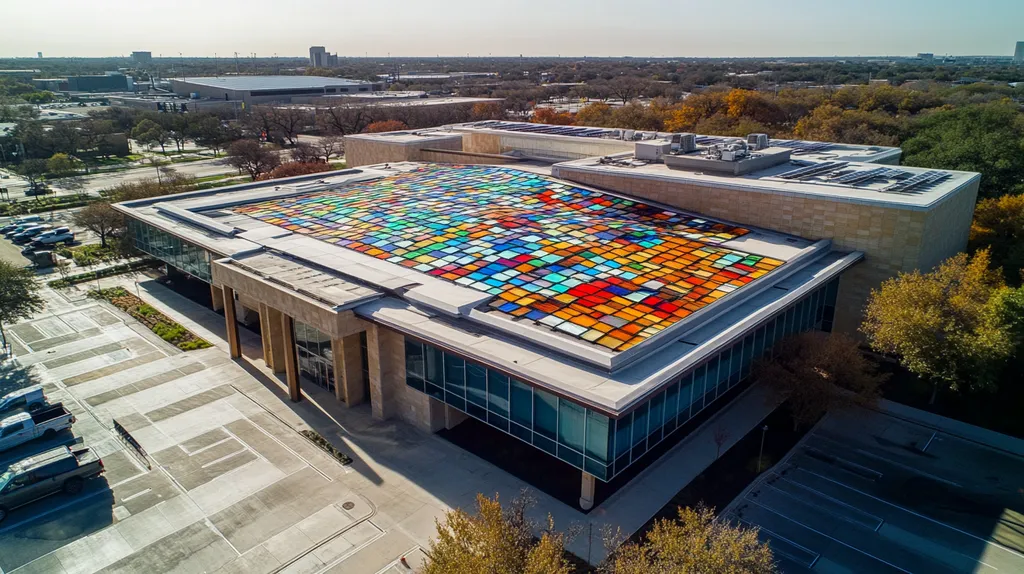Welcome to today’s Battle Royale featuring two roofing heavyweights: “Guardrails” in the east corner versus “Safety Harnesses” in the west!
Tonight’s showdown pits these contenders against each other across six punishing rounds designed to test every aspect of their performance for Industrial Roof Installation Safety Protocols.
At stake? Millions in potential costs, decades of building protection, and the critical performance demands of modern commercial and industrial facilities.
Our professional judging panel will evaluate each round on technical merit, real-world performance, and value delivery. After all six rounds, we’ll declare our ultimate champion.
Ladies and gentlemen, facility managers and building owners… it’s time to rumble!
ROUND 1: INITIAL COSTS & INSTALLATION
In industrial roofing, the margin between safety and catastrophe often comes down to initial equipment choices. Fall protection systems aren’t just regulatory requirements—they’re life-saving investments that demand careful consideration of costs and implementation factors. With OSHA reporting that falls remain the leading cause of fatalities in construction, the choice between guardrails and safety harnesses represents a critical decision point for facility managers.
Material Expenses
Warning line systems and guardrails must be constructed to withstand at least 16 pounds of force without tipping, incorporating high-visibility flags every 6 feet along the perimeter at heights between 34-39 inches. These specifications ensure optimal worker visibility and protection. (source: OSHA)
Guardrail systems typically require substantial upfront investment, with costs ranging from $15-25 per linear foot for materials meeting OSHA specifications. This investment includes not only the rails themselves but also mounting hardware and structural reinforcement materials.
Safety harness systems present lower initial material costs, averaging $200-400 per worker for basic equipment. However, these systems require anchor points, lanyards, and lifelines that need regular replacement, often annually.
Given the durability and longer lifespan of guardrail systems, they hold the ADVANTAGE in material expenses despite higher upfront costs.
Installation Complexity
Guardrail installation demands precise measurement, structural assessment, and permanent modifications to the roof surface. This process typically requires specialized tools and experienced installers to ensure compliance with safety standards.
The installation process often necessitates temporary work stoppage in affected areas, potentially disrupting facility operations. Additionally, weather conditions can significantly impact installation timelines.
Safety harness systems require minimal permanent modifications, focusing instead on identifying and installing anchor points. Training requirements are more extensive but can occur concurrent with other work activities.
The simplified installation process and flexibility of safety harness systems give them the clear ADVANTAGE in this category.
Project Timeline
Guardrail installation typically extends project timelines by 2-3 days per 100 linear feet, accounting for proper mounting and testing. This duration can increase significantly when dealing with complex roof geometries or weather delays.
Safety harness systems can be implemented within hours, requiring primarily the installation of anchor points and basic worker training. This rapid deployment allows projects to commence almost immediately.
The ability to begin work quickly while maintaining safety compliance gives safety harness systems a significant ADVANTAGE in project timeline considerations.
ROUND 1 WINNER: SAFETY HARNESSES
ROUND 2: DURABILITY & LIFESPAN
The longevity of industrial roofing systems directly impacts facility operations, worker safety, and bottom-line costs. With replacement costs for industrial roofs averaging $7-15 per square foot, choosing the right safety system becomes crucial for maintaining roof integrity and preventing premature deterioration.
Both guardrails and safety harnesses interact differently with roofing materials, affecting their durability in distinct ways. Understanding these interactions helps facility managers make informed decisions about long-term roof protection.
Weather Resistance
Permanent guardrail systems must withstand constant exposure to UV rays, precipitation, and temperature fluctuations. Quality guardrails typically maintain their structural integrity for 15-20 years with proper maintenance, though mounting points require regular inspection for water infiltration.
Safety harness anchor points, being smaller and more discrete, present less surface area for weather damage. However, these components require more frequent inspection and typically need replacement every 5-7 years due to potential metal fatigue.
When considering weather resistance and long-term durability, guardrails demonstrate superior performance, earning them the ADVANTAGE in this category.
System Maintenance Requirements
Guardrail systems demand minimal ongoing maintenance beyond annual inspections for loose fasteners and corrosion. Their fixed nature means fewer moving parts to maintain, though mounting points must be regularly checked for water-tightness.
Safety harness systems require more frequent inspections, with components needing regular testing and certification. Each anchor point must be load-tested annually, and textile components like lanyards need replacement every 2-3 years regardless of visible wear.
The lower maintenance burden and longer service intervals give guardrails the ADVANTAGE in maintenance requirements.
Impact on Roof Structure
Guardrail installations require permanent roof penetrations for mounting brackets, creating potential weak points in the roofing membrane. These penetration points can become sources of leaks if not properly maintained, potentially compromising roof integrity.
Safety harness systems typically use fewer roof penetrations, concentrating stress at specific anchor points. Modern anchor designs distribute forces more effectively across the roof structure, reducing the risk of membrane damage.
The reduced number of penetration points and better force distribution give safety harnesses the ADVANTAGE in structural impact.
ROUND 2 WINNER: Guardrails
ROUND 3: PERFORMANCE FACTORS
In industrial roofing, performance factors directly impact worker safety and project success. Recent data shows that fall protection violations remain OSHA’s most frequently cited standard, with over 5,000 citations issued annually. Understanding how different safety systems perform under real-world conditions is crucial for making informed decisions that protect workers and maintain productivity.
Worksite Mobility
Worker mobility significantly impacts both safety and productivity in industrial roofing projects. Guardrail systems create clear boundaries and safe zones, allowing workers to move freely within protected areas without additional equipment checks or adjustments.
Safety harnesses, while effective at preventing falls, restrict worker movement and require constant tether management. This limitation can slow down work processes and increase worker fatigue, particularly during long shifts or complex installations.
The freedom of movement and reduced physical burden provided by guardrail systems gives them the ADVANTAGE in worksite mobility.
Weather Adaptability
Industrial roofing projects face constant exposure to varying weather conditions. Guardrail systems maintain consistent performance regardless of weather, providing reliable protection in rain, wind, or extreme temperatures.
Safety harnesses can become compromised in wet conditions and require additional inspection after exposure to harsh weather. Ice and moisture can affect anchor point reliability, while extreme temperatures can impact harness material integrity.
The consistent performance across all weather conditions gives guardrails the ADVANTAGE in weather adaptability.
Multi-Worker Protection
Modern industrial roofing projects often require multiple workers operating simultaneously. Guardrail systems protect unlimited workers within their perimeter without additional equipment or coordination needs.
Safety harness systems require individual equipment for each worker, leading to potential shortages or compatibility issues. Multiple workers on harnesses can create tangling hazards and require careful coordination of movement patterns.
The ability to protect multiple workers simultaneously without additional complexity gives guardrails the ADVANTAGE in multi-worker protection.
ROUND 3 WINNER: GUARDRAILS
ROUND 4: MAINTENANCE REQUIREMENTS
Industrial roof maintenance brings critical safety and operational challenges that demand careful consideration. Data shows that inadequate fall protection maintenance contributes to over 30% of rooftop accidents annually. The choice between guardrails and safety harnesses significantly impacts not just worker safety, but also the efficiency and effectiveness of routine maintenance operations.
Inspection Frequency and Access
Regular rooftop inspections form the foundation of effective maintenance programs. These inspections must occur at least quarterly, with additional checks after severe weather events or modifications to rooftop equipment.
Guardrail systems require minimal inspection effort, focusing primarily on mounting points and structural integrity. Their fixed nature means inspectors can quickly verify compliance through visual checks and basic physical testing.
Safety harness systems demand more frequent and thorough inspections of multiple components. Each anchor point, lanyard, and harness requires individual testing and documentation, significantly increasing inspection time and complexity.
The simplified inspection process gives guardrails the ADVANTAGE in this category.
Component Replacement
The warning line system requires regular checks of ropes, wires, chains, and stanchions to maintain minimum tensile strength requirements. These components must be erected at least 6 feet from roof edges with high-visibility flagging every 6 feet. (source: OSHA)
Guardrail systems typically need component replacement every 15-20 years, with most parts serviceable through simple mechanical repairs. Their durable construction reduces the frequency of major replacements.
Safety harness systems require regular replacement of textile components and frequent recertification of anchor points. The shorter lifespan of critical components creates ongoing replacement costs and maintenance scheduling challenges.
The longer component life and simpler maintenance schedule gives guardrails the ADVANTAGE in replacement requirements.
Documentation Requirements
Maintaining proper safety documentation represents a crucial aspect of fall protection maintenance. Regular updates and accessible records protect both workers and facility managers.
Guardrail systems require minimal ongoing documentation beyond initial installation records and annual inspection reports. Their passive protection nature simplifies compliance tracking.
Safety harness systems demand extensive documentation, including individual equipment logs, inspection records, and worker training certifications. This increased paperwork burden creates additional administrative overhead.
The reduced documentation burden gives guardrails the ADVANTAGE in this category.
ROUND 4 WINNER: GUARDRAILS
ROUND 5: SUSTAINABILITY CREDENTIALS
Environmental impact has become a critical factor in industrial roofing decisions, with mounting pressure to reduce construction waste and energy consumption. The EPA reports that construction activities generate over 600 million tons of debris annually, making sustainable safety solutions increasingly vital for responsible facility management.
The choice between permanent and temporary fall protection systems carries significant implications for a facility’s environmental footprint, from manufacturing impacts to end-of-life disposal considerations.
Material Sustainability
Guardrail systems typically consist of galvanized steel or aluminum components, requiring significant energy input during manufacturing. These materials, while durable, demand extensive mining and processing operations that generate substantial carbon emissions.
Modern guardrail designs incorporate recycled metals, but their permanent nature means they often become obsolete when roof configurations change. This results in additional waste when systems require replacement or modification.
Safety harness systems utilize lightweight, high-strength synthetic materials with lower manufacturing energy requirements. Many components can be recycled at end-of-life, and their modular nature allows for targeted replacement of worn parts.
The reduced material intensity and better recyclability give safety harnesses the ADVANTAGE in material sustainability.
Installation Footprint
Guardrail installation requires heavy equipment and generates significant waste from packaging and cutting materials to size. The process often damages existing roofing materials, necessitating repairs that create additional waste.
The permanent mounting points required for guardrails create long-term maintenance challenges, as deterioration around these points often leads to premature replacement of surrounding materials. This cascading effect multiplies the environmental impact.
Safety harness systems require minimal installation resources and generate little waste during setup. Their anchor points create smaller penetrations that are easier to maintain and less likely to compromise surrounding materials.
The reduced installation impact gives safety harnesses the ADVANTAGE in this category.
Operational Efficiency
In this category, proper tool safety features and operating procedures directly impact work efficiency and sustainability. Safe body placement and equipment usage minimize rework and material waste.
Guardrail systems allow workers to move freely within protected areas, reducing energy expenditure and improving work efficiency. However, their fixed nature can impede access to roof-mounted equipment, potentially increasing maintenance time and resource consumption.
Safety harness systems enable precise positioning and targeted access to work areas, minimizing unnecessary movement and material handling. Their flexibility supports efficient maintenance procedures while maintaining worker safety. (source: OSHA)
The enhanced work efficiency and reduced resource consumption give safety harnesses the ADVANTAGE in operational efficiency.
ROUND 5 WINNER: SAFETY HARNESSES
ROUND 6: SPECIALIZED APPLICATIONS
In industrial roofing, specialized applications present unique safety challenges that demand careful consideration. With OSHA reporting over 300 fatal falls in construction annually, choosing the right safety system for specific scenarios can mean the difference between life and death. Understanding how different protection methods perform in maintenance work, seasonal conditions, and challenging roof configurations is crucial for facility managers making safety decisions.
Maintenance Work
Regular maintenance activities require consistent access to various roof areas, from HVAC units to drainage systems. These tasks often involve extended periods of work in potentially hazardous zones, making proper fall protection essential.
Guardrail systems create permanent safe zones around maintenance areas, allowing workers to focus on tasks without constantly checking safety equipment. Their fixed nature provides reliable protection during routine inspections and repairs.
Safety harnesses offer flexibility for reaching difficult areas but require workers to maintain constant awareness of their tether points. This additional cognitive load can distract from maintenance tasks and increase the risk of errors.
The ability to provide passive protection while allowing focused work gives guardrails the ADVANTAGE in maintenance applications.
Seasonal Conditions
Weather variations create unique challenges for rooftop safety, particularly during snow removal or storm preparation. These time-sensitive tasks require immediate access and reliable protection regardless of environmental conditions.
Guardrail systems maintain their effectiveness regardless of weather conditions, providing consistent protection even in ice or high winds. Their visibility remains clear in poor weather, helping workers maintain spatial awareness.
Safety harnesses become more challenging to use in adverse weather, with ice and moisture affecting anchor point reliability. Cold conditions can also impact proper harness adjustment and worker comfort.
The consistent performance across all weather conditions gives guardrails the ADVANTAGE in seasonal applications.
Complex Configurations
Modern industrial roofs often feature irregular shapes, multiple levels, and various mechanical installations. These complex configurations create unique safety challenges that require adaptable protection methods.
Warning line systems must be erected at least 6 feet from roof edges, with high-visibility flags every 6 feet and heights between 34-39 inches from the walking surface. This standardized approach ensures consistent protection across varying roof designs. (source: OSHA)
Safety harnesses offer maneuverability around obstacles but require multiple anchor points to maintain protection across different roof sections. This complexity increases the risk of improper use or equipment failure.
The ability to provide standardized protection across various roof configurations gives guardrails the ADVANTAGE in complex applications.
ROUND 6 WINNER: GUARDRAILS
AND THE WINNER IS…
After six grueling rounds of technical evaluation, we have our verdict…
In a hard-fought battle that tested every aspect of industrial roof safety, GUARDRAILS emerge victorious with a commanding 4-2 victory over Safety Harnesses!
The champion dominated in critical categories including durability, performance factors, maintenance requirements, and specialized applications. Its ability to provide consistent, passive protection while minimizing long-term maintenance costs proved decisive in this showdown.
But don’t count Safety Harnesses out completely! Their superior showing in initial costs, installation speed, and sustainability credentials makes them a formidable challenger – especially for temporary work sites or projects requiring rapid deployment.
IMPORTANT SAFETY NOTE: While this analysis provides general guidance, every facility faces unique challenges. Local building codes, weather conditions, roof configuration, and specific operational requirements can all impact system selection. Always consult with qualified safety professionals and roofing experts who can evaluate your specific situation before making a final decision.
Ladies and gentlemen, in the high-stakes arena of industrial roof safety, victory goes not to those who blindly follow the champion, but to those who carefully match their facility’s specific needs with the right contender’s strengths. Choose wisely – workers’ lives depend on it!
FREQUENTLY ASKED QUESTIONS
Q. What are the initial costs for commercial roof safety systems?
A. Initial costs vary for safety systems. Guardrails are more expensive at $15-25 per linear foot, requiring permanent installation. Safety harnesses cost $200-400 per worker, needing regular replacement for components. The long-term investment must consider both upfront costs and ongoing maintenance.
Q. How do guardrails and harnesses differ in durability for industrial roofs?
A. Guardrails typically last 15-20 years with proper maintenance, while harness anchor points need replacement every 5-7 years. Guardrails require regular inspections, but safety harnesses demand more frequent checks and testing, making durability a critical consideration for facility managers.
Q. Which safety system performs better for mobility on commercial roofs?
A. Guardrails enhance worksite mobility by allowing free movement without tethering. In contrast, safety harness systems can restrict movement, requiring constant management of tethering equipment. This can hinder efficiency and increase fatigue during long work shifts, especially for multiple workers.
Q. What are the maintenance requirements for industrial roof safety systems?
A. Guardrails require minimal upkeep with basic visual inspections, while safety harnesses need frequent checks on multiple components. Each harness, anchor point, and lanyard necessitates detailed inspections and documentation, significantly increasing the complexity and time involved in maintenance routines.
Q. Are guardrails or safety harnesses more environmentally sustainable?
A. Safety harness systems generally have a lower environmental impact due to their modular design and use of lighter materials. They require fewer resources during manufacturing and can have recyclable components, whereas guardrails, while durable, often create more waste and have a higher production energy demand.
Q. Which system is better for challenging roof conditions?
A. Guardrails provide better performance in complex roof configurations and adverse weather, ensuring consistent safety. They create defined safe zones without needing constant adjustments, while safety harnesses can complicate access in challenging conditions and require careful management of anchor points.
Q. How do safety systems impact training for workers on commercial roofs?
A. Training needs vary; safety harness systems require detailed instruction on usage, inspection, and tether management. In contrast, guardrail systems often demand less training as they function passively, allowing workers to focus on their tasks without as much concern for fall safety precautions.

